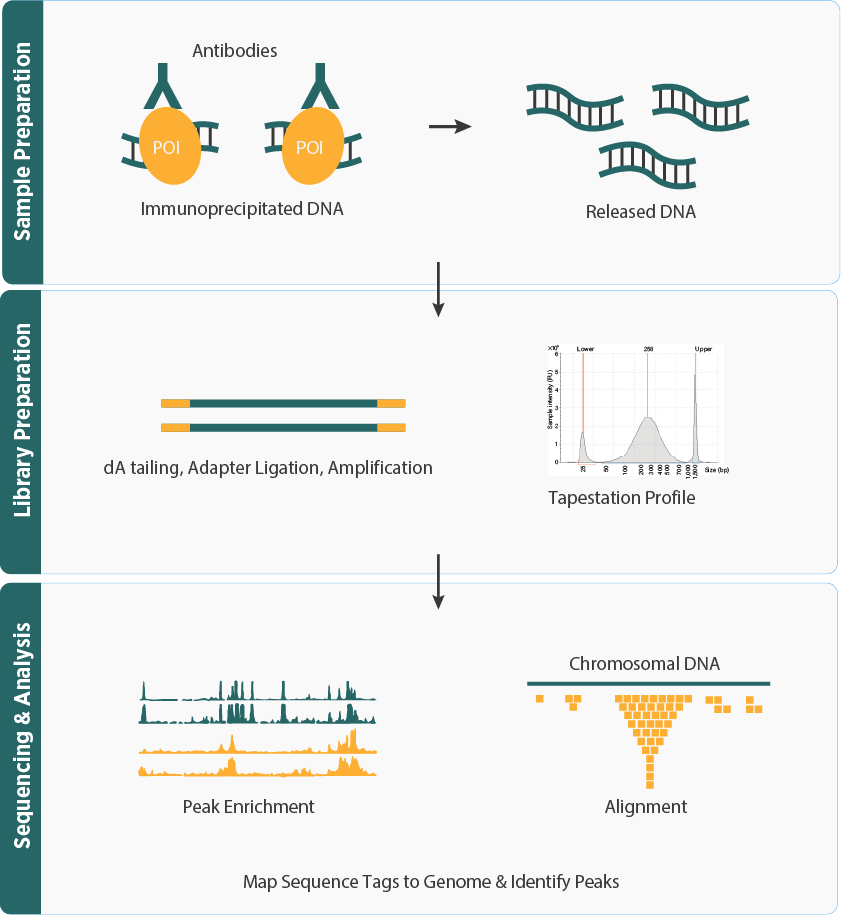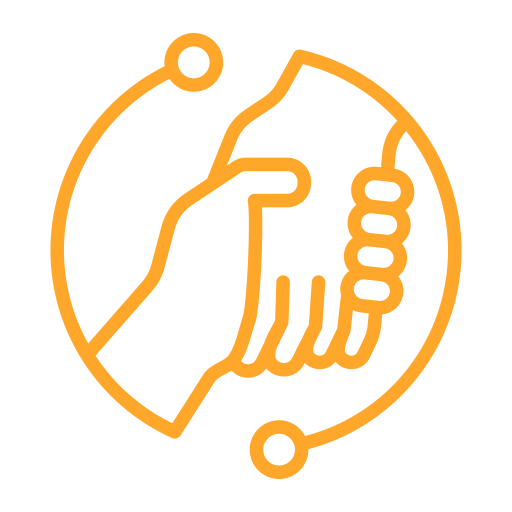Introduction and Workflow
- ChIP-Seq provides a comprehensive genome-wide map of protein-nucleic acid interactions, offering detailed insights into protein-DNA binding events and chromatin organization.
- The workflow begins with chromatin preparation, which includes cross-linking proteins to DNA and fragmenting the chromatin. Protein-DNA complexes are then isolated using specific antibodies and purified.
- Following this, NGS libraries are created by adding adapters and amplifying the DNA, which is subsequently sequenced on an Illumina platform.
- It provides valuable insights into gene regulation, revealing dysregulated pathways in cancers, developmental processes, and other biological phenomena.
Advantage
- Offers detailed genome-wide mapping of protein-DNA interactions, identifying binding sites of transcription factors, regulators, and other DNA-associated proteins.
- Utilizes specific antibodies to precisely capture and sequence protein-DNA complexes, providing accurate reflections of in vivo binding events.
- Reveals critical insights into gene regulation and chromatin dynamics, aiding in the understanding of gene expression, regulatory mechanisms, and epigenetic modifications.
- Facilitates studies on gene regulation in various contexts, including developmental processes, cancer research, and other biological phenomena, enhancing our understanding of complex biological systems and diseases.

Applications of ChIP Sequencing
- Transcription Factor Binding Analysis- Identifies and maps the binding sites of transcription factors across the genome, revealing their roles in gene regulation and the modulation of gene expression.
- Histone Modification Mapping- Profiles histone modifications to understand their influence on chromatin structure and gene accessibility, providing insights into epigenetic regulation and chromatin dynamics.
- Regulatory Element Discovery- Uncovers enhancers, silencers, and other regulatory elements that control gene expression, aiding in the identification of key regions involved in gene regulation.
- Epigenetic Research- Studies epigenetic marks associated with various cellular states and processes, such as differentiation and development, to elucidate the mechanisms underlying gene expression changes and disease states.
- Cancer Research- Examines changes in chromatin structure and transcription factor binding in cancer cells, identifying potential biomarkers and therapeutic targets for cancer treatment.
- Developmental Biology- Investigates changes in gene regulation during development, revealing how chromatin modifications and transcription factor binding contribute to cellular differentiation and tissue development.
- Drug Discovery- Provides insights into the effects of drugs on chromatin structure and gene regulation, supporting the identification of new drug targets and the development of therapeutic strategies.
Service Specifications
Sample Requirement
Cell sample ≥ 50,000 cells; Nucleus sample ≥ 50,000 nuclei
Please refer to sample submission guidelines or Contact Us!
Sequencing Platform
Illumina NovaSeq 6000/ NovaSeq X

Deliverables
- The original sequencing data
- Experimental results
- Bioinformatics and Data Analysis Report
- Details of ChIP Sequencing (customizable)
